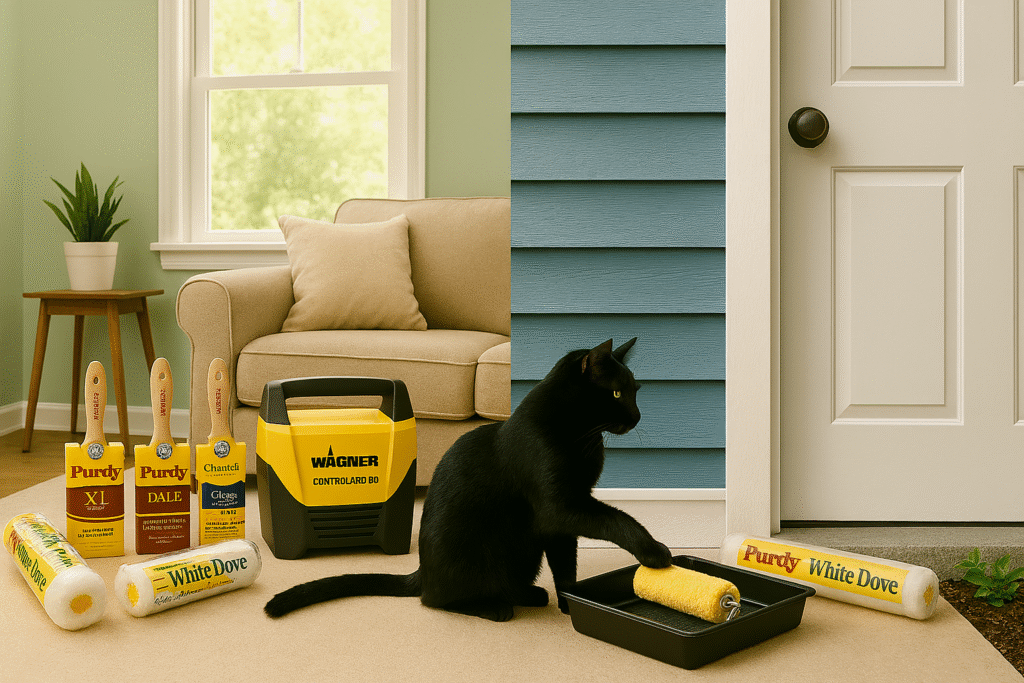A Side-by-Side Guide to Interior and Exterior Paint
Ever walked down the paint aisle and felt bombarded by choices? When it comes to painting the inside or outside of your home, knowing the ins and outs of interior and exterior paint can save you a lot of stress. Let’s break down what makes them different and why it matters.

Interior and exterior paints might look the same in their cans, but they’re formulated to do different jobs. The pigments are the bits that give paint its color. Then there’s the resin, which sticks the paint to walls. Solvent acts like the carrier that lets you paint smoothly across surfaces, and additives are mixed in to make sure the paint does what it’s supposed to. Sounds simple, right? Well, each part plays a role in how the paint performs.
For interior paints, it’s all about comfort and ease. You’ve got latex paint, which is water-soluble, meaning it’s easy to clean up with water. It dries fast, great for quick touch-ups and areas that won’t see a lot of action. Acrylic paint, being a close cousin with a few more polymers, holds up better against wear, but that durability comes at a bump in price. Then, there’s alkyd paint—oil-based and tougher than its water-soluble relatives but a bit slow to dry. Perfect for areas like doors that get a lot of use.
Now, let’s talk exterior paint. It’s designed to handle the climate and temperature changes without breaking a sweat. Acrylic exterior paint has extra chemicals making it less likely to crack or peel when the weather changes. Latex for the outside is a budget-friendly choice, sharing acrylic’s stretchy nature for expanding and contracting with the heat. Oil-based paints might not be as common anymore due to smell and fumes, but they’re still out there, great for surfaces that need a tough finish. Remember, each type adapts differently to its environment, so knowing where they shine can make all the difference.
Choosing the Right Paint: Interior vs. Exterior Applications
Finding the perfect paint match for your project is more about understanding your needs than just picking a color. Not all paints are created equal and knowing when to use interior vs. exterior paints can save you from future headaches.
When you’re choosing a paint for inside, think about the function of each room. For example, a low-traffic room might be perfect for matte or eggshell finishes because they hide flaws but are tougher to clean. For busier areas, an eggshell finish offers that balance of durability and aesthetics, perfect for living rooms or kitchens.
On the flip side, exterior paints have to brave the elements, making them tougher by design. Consider the climate where you live—if it’s super sunny, an acrylic paint that withstands UV rays might be your best bet. On overcast or rainy days, semi-gloss on window frames or high gloss on doors offers a touch of resilience while looking sharp. Higher sheen finishes are easier to clean but will show imperfections if you’re not careful with surface prep.
The finish of your paint determines not just the look but the longevity of the project. Interiors can use a variety of finishes based on cleaning needs and style, from matte, which is less shiny and perfect for low-traffic spaces, to semi-gloss, which takes toddler fingerprints in stride. For exteriors, high-gloss paints make doorways shine while standing tough against weathering.
Where you might want high gloss finishes inside for door trims and moldings, it’s a great choice outside too. Not only does it stand out, but the durability is perfect for areas that face constant touch or exposure. Meanwhile, a semi-gloss exterior paint can add just the right sparkle to window frames, keeping them bright and clean even amidst weather changes.
<< Previous Page: Best Painting Tools
Next Page: Paint Brushes, Rollers & Primers >>